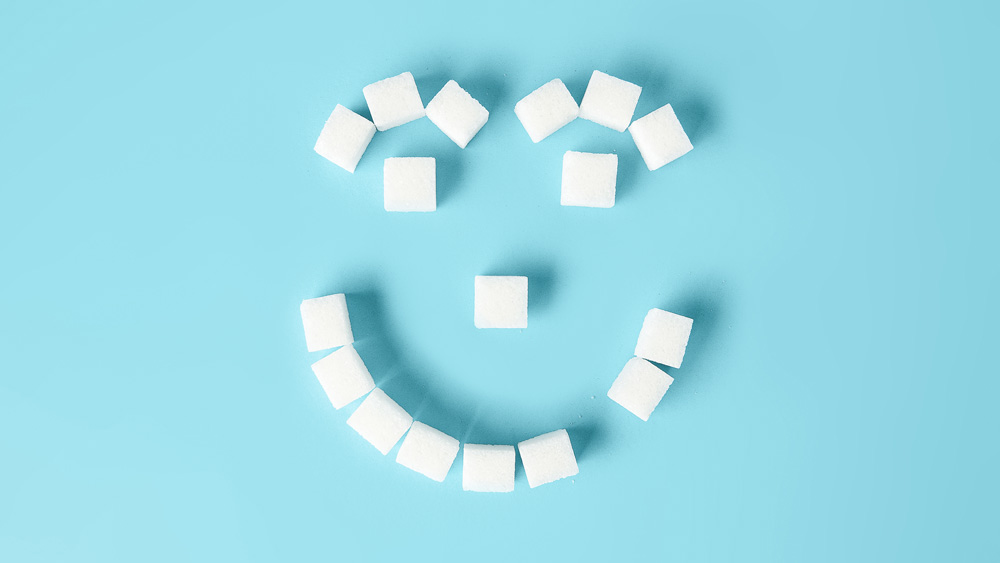How To Stop Your Kids Eating Too Much Sugar
Children are eating way too much of the sweet stuff, but a few simple swaps can make a big difference

Every year, the average child is eating around 2,800 more sugar cubes than they should, averaging around 13 cubes (52g) a day. The result of this is that they hit the recommended lifetime amount of sugar consumed for an 18-year-old by the time they are just ten.
Those staggering stats are based on the National Diet and Nutrition Survey, and have been released by Public Health England, which is aiming to tackle the problem from two sides by convincing food suppliers to reduce the amount of sugar by 20% in the foods children eat the most of by 2020, while also encouraging parents to laser in on their offspring’s sugar intake in the meantime. As we’ve discovered in the past, however, trying to limit sugar in your diet gets complicated quickly. So here’s a quick primer for time-pressed parents.
So how much sugar should kids be eating? For children aged four to six the recommended maximum daily intake of sugar is five cubes, or 19g. We say maximum because we wouldn’t want anyone to come away with the notion that five cubes is a quota for a four-year-old to shoot for. This rises to six cubes (24g) between seven and ten, and then seven cubes (30g) for those 11 and over. For reference, a 330ml can of Coke contains nine cubes (35g) of sugar, blowing the recommended max for children of all ages, which demonstrates how tricky it is to avoid overdosing on the sweet stuff.
Fizzy drinks are tricky to swap for anything other than lower-sugar versions of themselves, unless you’re prepared to face down a furious child. The potential effects on health of the sweeteners in low or no-sugar drinks is a can of worms we’re not going to open right now, but those drinks are definitely lower in sugar.
When it comes to fruit juices make sure you’re opting for one with no added sugar, and even then only 150ml a day will count towards your five portions of fruit and veg.
See related
- Make This Healthy Banana Flapjacks Recipe With Your Kids
- How Much Sugar Should You Have A Day?
- How Much Sugar?! Four Foods To Watch Out For
Along with sugary drinks the other main source of sugar in kids’ diets include cakes and pastries, biscuits, breakfast cereals, chocolate and yogurts with added sugar. Don’t worry at all about the natural sugars in fruit and veg, plain yogurt and milk – it’s very much the added stuff that it’s key to keep tabs on.
A few simple swaps can make a big difference to the amount of sugar a kid eats, starting with trading out sugar-frosted or chocolatey cereals for something like Shredded Wheat or corn flakes. It’s also worth checking the labels on your yogurts, because fruity numbers with loads of added sugar can be easily traded for natural yogurt that contains half the amount of sugar. Add some real fruit to that yogurt to safely up the sweetness and you’ll get one step closer to meeting the five-a-day tally.
Get the Coach Newsletter
Sign up for workout ideas, training advice, reviews of the latest gear and more.
The NHS’s Change4Life website has loads of resources that can help you keep track of your kid’s sugar intake (and indeed your own), including suggestions for sugar swaps and low-sugar snacks, a calculator to help you tot up the amount of sugar consumed each day, and the Food Scanner app (available on App Store and Google Play) which allows you to scan barcodes in supermarkets to see easily how much sugar they contain.

Nick Harris-Fry is a journalist who has been covering health and fitness since 2015. Nick is an avid runner, covering 70-110km a week, which gives him ample opportunity to test a wide range of running shoes and running gear. He is also the chief tester for fitness trackers and running watches, treadmills and exercise bikes, and workout headphones.
